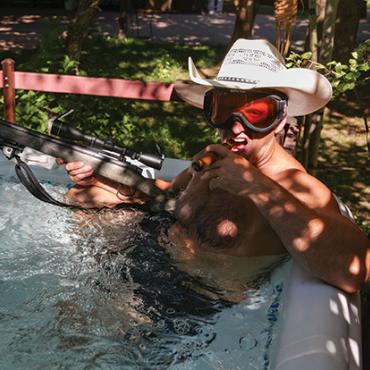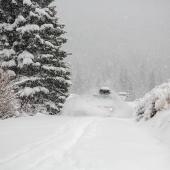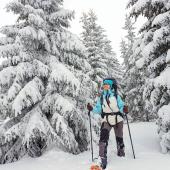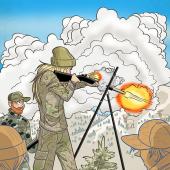The Road Home
The culmination of a good hunt is not the kill—oftentimes, that’s the easy part. Getting the animal home, in good condition, is the real end-game, and often where the greater challenge lies. From field to freezer, a lot can go wrong. Here’s how to do it right.
In the Field
A quick, clean kill is essential; any kind of prolonged struggle can taint the meat. Gut the animal quickly, and get the carcass back to the truck—whole, if possible. Protect any exposed flesh with cheesecloth or game bags. The most important thing is to allow the meat to breathe—open up the ribcage with a stick, and lay the animal on its back with legs splayed open. Or hang it from a tree limb in a similar posture.
If the air is above 50 degrees, get home as soon as possible. Below that, or if it gets cold at night, hang the animal in the shade and feel the meat every so often. As long as it remains cold to the touch throughout the day, you should be fine. But always err on the side of caution, especially with antelope. If you’re nervous about spoilage, get the hide off, quarter the animal, and put it in a cooler.
On the Road
Before a long drive on a warm day, it may be tempting to stuff a carcass full of bagged ice and make a break for it. This is a mistake. The ice generally cools the surface only, and actually hinders the interior from cooling. Airflow is more important—if you’ve got a topper on your truck, open up the windows.
The safest bet is to bring a cooler along—a big one, or several smaller ones. Backstraps, loins, and trim (rib and neck meat, etc.) should go in first, as they’re more vulnerable. Next come the quarters, which can be de-boned if space is an issue. Block ice is best, with a layer of cardboard between the ice and the meat to prevent freezer burn.
Coolers make a great back-up plan, too. Two years ago, my brother and I were racing the clock, trying to get home with two rapidly-warming mule deer on a rapidly-warming October day. Outside of Billings, my truck broke down. As cars zipped by on I-90, we quartered the deer on the tailgate and put them in the cooler. Then we cracked a beer and waited patiently for the tow truck.
If you’re from out of state, another option is to drop your animal at a local processor. You can pay for expedited processing, or have them ship your meat home for you. It’s spendy, but often safer than driving it home yourself, which generally means dry ice, several quarts of coffee, and a radar detector.












